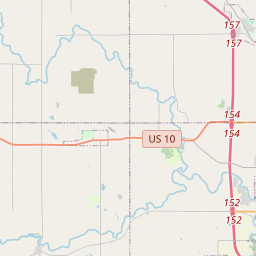Civil War Memorial
Historical marker location:






April 12, 1861: The Civil War begins with the Confederate attack on Fort Sumter, located in South Carolina's Charleston Harbor.
April 15, 1861: President Abraham Lincoln issues a call for 75,000 volunteers to serve in the Union Army to suppress the rebellion.
May 24, 1861: The first major land battle, known as the First Battle of Bull Run (or First Battle of Manassas), takes place in Virginia. It ends in Confederate victory.
September 17, 1862: The Battle of Antietam in Maryland becomes the bloodiest single-day battle in American history, with heavy casualties on both sides. The Union forces, commanded by General George McClellan, manage to halt Confederate General Robert E. Lee's advance into Union territory.
January 1, 1863: President Lincoln issues the Emancipation Proclamation, declaring that all slaves in Confederate-held territories are to be set free. However, the proclamation does not immediately free all slaves in the United States.
July 1-3, 1863: The Battle of Gettysburg in Pennsylvania takes place, resulting in a significant Union victory and inflicting heavy casualties on Confederate forces. It marks a turning point in the war.
November 19, 1863: President Lincoln delivers the Gettysburg Address, emphasizing the principles of liberty, equality, and the preservation of the Union.
April 9, 1865: General Robert E. Lee surrenders to Union General Ulysses S. Grant at Appomattox Court House in Virginia, effectively ending the Civil War.
April 14, 1865: President Lincoln is assassinated by John Wilkes Booth while attending a play at Ford's Theatre in Washington, D.C.
May 10, 1865: Confederate President Jefferson Davis is captured, signaling the collapse of the Confederate government.
December 6, 1865: The Thirteenth Amendment to the United States Constitution is ratified, officially abolishing slavery throughout the country.
While this timeline provides an overview of key events, it is important to note that the Civil War spanned over four years, from 1861 to 1865, and encompassed numerous battles, campaigns, and political developments that shaped the course of American history.
The first ever televised political debate was held in Wisconsin during the 1950 U.S. Senate race between Joseph McCarthy and Robert La Follette Jr.
European exploration of the area began in the early 17th century when French fur traders and missionaries ventured into the region. The first permanent European settlement in Manitowoc County was established in 1835 by Joseph Vilas, who set up a trading post along the Manitowoc River. The area quickly attracted more settlers, primarily of German and Irish descent, who were drawn to the fertile farmland and opportunities for trade and commerce.
In the mid-19th century, Manitowoc County experienced significant growth and development as the result of its strategic location along Lake Michigan. The opening of the Manitowoc Shipbuilding Company in 1847 established the county as a major center for shipbuilding and maritime trade. The shipping industry flourished, with vessels being built to transport goods and passengers across the Great Lakes.
During the late 19th and early 20th centuries, Manitowoc County continued to thrive as a manufacturing hub, with industries such as aluminum production, papermaking, and automobile manufacturing contributing to its economic prosperity. The county also played a significant role in World War II, as many of its companies retooled their operations to support the war effort.
Today, Manitowoc County remains an important industrial and agricultural center in Wisconsin. Its rich history is reflected in its museums, historical sites, and cultural events that showcase the contributions and experiences of the diverse communities that have shaped the region over the years.
Manitowoc County Timeline
This timeline provides a glimpse into the major events and milestones that have shaped the history of Manitowoc County, Wisconsin.
- 1835 - Treaty of the Cedars opens up the area of Manitowoc County for settlement
- 1836 - The first permanent settler, Louis Marchant, arrives in the area
- 1839 - Manitowoc County is officially organized
- 1848 - Wisconsin becomes a state, and Manitowoc County is incorporated into it
- 1851 - The city of Manitowoc is founded
- 1861-1865 - Manitowoc County residents participate in the American Civil War
- 1880s - Industrialization begins in Manitowoc County with the development of shipbuilding and manufacturing industries
- 1892 - Capone family moves to Manitowoc County before eventually relocating to Chicago
- 1900s - Manitowoc County thrives as a manufacturing and agricultural center
- 1954 - The Manitowoc Company, a leading shipbuilding and manufacturing company, is founded
- 2005 - The Netflix documentary series "Making a Murderer" brings international attention to Manitowoc County
- Present - Manitowoc County continues to be a vibrant community with a mix of industries, agriculture, and tourism